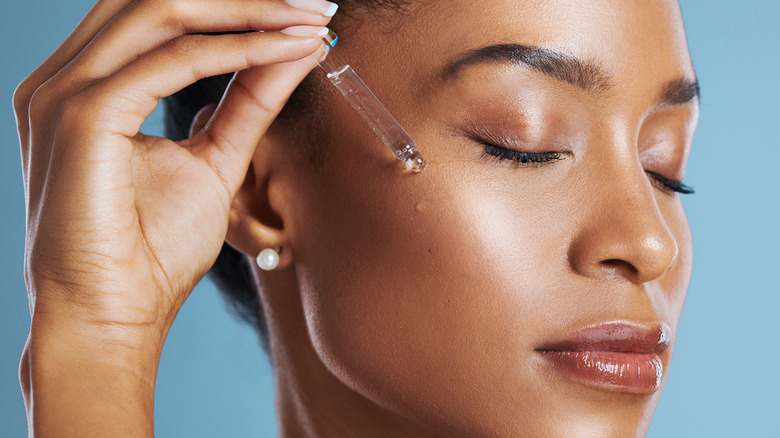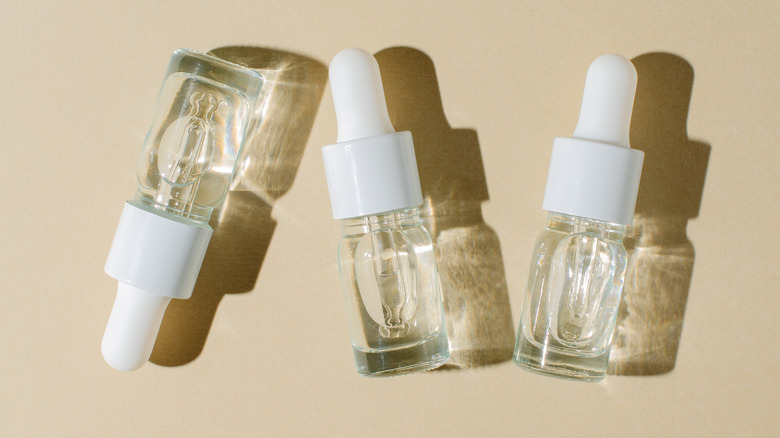You Can't Escape Niacinamide, But What Exactly Can The Skincare Favorite Do For Your Skin?
In case you haven't noticed, niacinamide is all the rage in the skincare space at the moment, and it will likely be at the forefront of everyone's radar in the foreseeable future.
On the off chance that you're not familiar with the skin care powerhouse, niacinamide, which is also referred to as nicotinamide, is a "physiologically active form of niacin or water-soluble vitamin B3," board-certified dermatologist Dr. Adeline Kikam told CNN. She added that it's known for "regulating excess sebum production (helpful for oil control), reducing acne breakouts and minimizing the appearance of pores," but it's also touted for its other purported benefits including alleviating inflammation, evening the skin tone, and strengthening the skin barrier.
Based on these benefits alone, it's no wonder that niacinamide can be found in an increasing number of skin care products, from serums and creams to toners and essences. But before you pick up a niacinamide serum and include it in your regimen, it's worth knowing what it actually does first and how to maximize its usage.
Inside the wonders of niacinamide
Niacinamide appears to be an ingredient that sounds too good to be true, considering the fanfare it's getting from both professionals and users, but the praise is actually warranted. Board-certified dermatologist and dermatologic surgeon Dr. Jennifer Hermann noted that niacinamide offers a litany of restorative and corrective measures, including reducing the symptoms of aging (wrinkles and age spots, anyone?) and minimizing discoloration. How does it do all these, you ask? "Nicotinamide helps restore cellular energy, repair damaged DNA, and reduce the immunosuppressive effects of sun-induced UV rays," Dr. Hermann explained to Byrdie.
Aside from helping eradicate your blemishes, it can also fight off environmental stressors that damage your skin. Board-certified dermatologist Dr. Robin Schaffran told Today: "It functions predominantly as an antioxidant, meaning it counteracts oxidative stress induced by environmental damage."
But while niacinamide can seem like a do-it-all product, you can't expect results overnight.Yet it's not too long of a wait, as a study published in The British Journal of Dermatology found that brightening effects were noticed by users after only four weeks of using the ingredient. Additionally, niacinamide cannot be considered a suitable replacement for retinol, which is a whole other powerful ingredient revered for its ability to accelerate cell turnover. What you can do, though, is use them in conjunction with one another to address a number of skin concerns.
How to incorporate niacinamide into your routine
One of the best things about niacinamide is it works well with nearly every product in your arsenal, so you won't have a hard time including it in your regular skincare regimen. "Because niacinamide is anti-inflammatory, the skin reacts very minimally to it, and side effects such as irritation are unusual," Dr. David Lortscher, board-certified dermatologist and CEO of Curology shared with InStyle. "It should be compatible with most other skincare products, and for best results, use a leave-on product such as a moisturizer."
But — and this is a big but — you should be careful about using it with a vitamin C ingredient because they can cancel each other out if one is used right after the other. "Their potency is significantly diminished when used together, unless the application is spaced by at least 10 minutes between each serum," noted Dr. Lortscher.
If you really wish to use both ingredients in the same routine, make sure to space them out, and do layering instead of mixing. Apply the vitamin C serum first, and when your skin is dry and you know that it's been fully absorbed by your skin, then that's the time you can use niacinamide.


